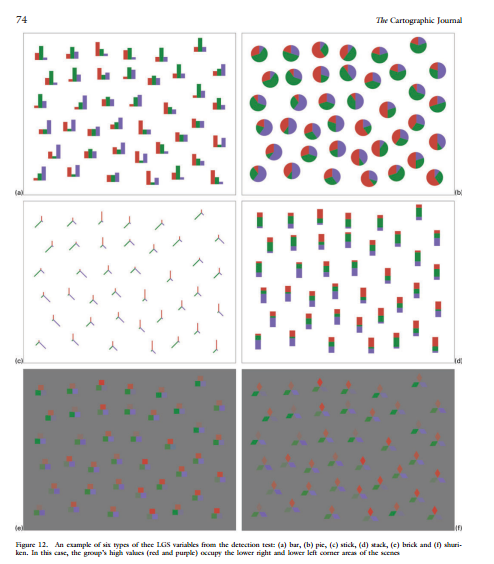I would call them glyphs although I'm skeptical it is such an established adjective that it will be immediate to many audiences. Vasan et al. (2013) is a great review of different types of glyphs used in the literature (plus an experimental study for the differences between bricks like you show and clustered bars, pies, and sticks). The image below is from the cited paper and shows the different experimental stimulus:

Other ones I am familiar with are Chernoff faces and population pyramids (Dorling, 2012), filled rectangles to replace univariate choropleth maps (Cleveland & McGill 1984), star plots (Friendly, 2007; Wickham et al. 2012) and more complicated stick glyph variants (Maddox et al. 2013). Below is an example of Chernoff faces taken from Dorling (2012) (of course positioned according to a circular Dorling cartogram - I'm reading the Dorling book now and it has a ton of different types of glyphs I haven't seen elsewhere).

(source: dannydorling.org)
Some notes on their use:
- Irregularly spaced data are typically more difficult to visualize and have problems of glyphs overlapping and being occluded (Wickham et al. 2012).
- Glyphs tend to generate extremely complicated maps. Because of this, it is often more effective use of space to make several small multiple maps as oppossed to one map will all of the information superimposed. See Effectively displaying demographic data on a printed map for related discussion.
#References
- Cleveland, William & Robert McGill. 1984. Graphical perception: Theory, experimentation, and application to the development of graphical methods. Journal of the American Statistical Association 79(387):531-554. PDF Here.
- Dorling, Danny. 2012. The visualisation of spatial social structure. Wiley. Original Dissertation Here Here. Images Here.
- Friendly, Michael. 2007. A.M. Guerry's moral statistics of France: Challenges for multivariable spatial analysis. Statistical Science 22(3):368-399. PDF Available from publisher.
- Maddox C., J. Corcoran & Y. Liu. 2013. Mapping spatial flows over time: A case study of using journey-to-work data. Journal of Spatial Science 58(1):147-159.
- Vasa, Choengsa-ard, Nitin Tripathi & Paul Janecek. 2013. Effective graphic features for multivariate symbol mapping. The Cartographic Journal 50(1):66-81.
- Wickham, Hadley, Heike Hofmann, Charlotte Wickham & Dianne Cook. 2012. Glyph-maps for visually exploring temporal patterns in climate data and models. Environmetrics 23(5):382-393. Pre-print PDF.
